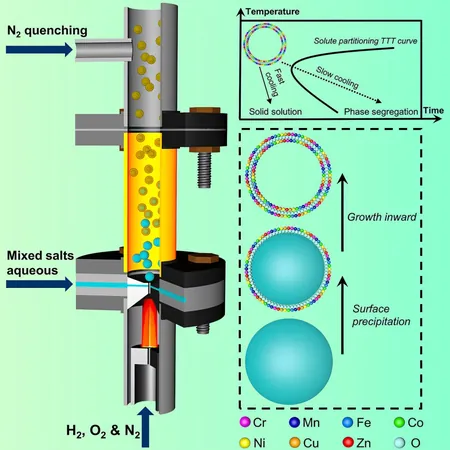
The Cataclysmic Impact of a Meteorite on Early Earth: Unraveling the Effects on Surface Environments and Primitive Life
2024-10-30
Author: Wei Ling
Introduction
Large meteorite impacts played a crucial role in shaping the habitability of our planet during the Archean Eon, a time when life was just beginning to emerge. Geological records indicate that at least 16 significant impact events occurred, each involving meteorites larger than 10 kilometers in diameter. These colossal impacts would have drastically altered surface environments on early Earth, although the specific repercussions for early life forms remain largely ambiguous.
Analysis of the S2 Impact Event
Recent analyses have focused on the sedimentology, petrography, and carbon isotope geochemistry of sedimentary rocks related to the S2 impact event (originating from a 37 to 58 km carbonaceous chondrite) found in the 3.26 billion-year-old Fig Tree Group of South Africa. This study has revealed several environmental effects resulting from the S2 impact, providing insight into its biological consequences.
Environmental Effects of the Impact
First and foremost, the impact generated a massive tsunami, which violently mixed iron-rich deep ocean waters with the shallower, iron-poor waters, drastically altering marine ecosystems. Coastal areas experienced severe flooding, inundating previously stable environments with debris. Additionally, the heat produced by the impact likely caused partial evaporation of surface ocean waters, resulting in increased weathering and erosion of land masses.
Injection of Nutrients
Another critical outcome was the injection of phosphorus (P) into the environment due to the vaporization of the S2 bolide. This element is vital for biological processes, suggesting a potential boost for life forms that thrived in nutrient-rich settings.
Microbial Response to Catastrophe
The rock strata directly above the S2 impact event exhibit a wealth of siderite, often linked to organic matter, along with variations in carbon isotopes. This indicates an active microbial iron cycling process in the aftermath of the catastrophe. While the immediate effects of the tsunami and atmospheric heating would have likely devastated phototrophic microorganisms in the shallow water column, the biosphere demonstrated remarkable resilience.
Long-Term Impact on Early Life
Although the initial aftermath was harsh, recovering swiftly, the long-term effects of the impact appeared to be beneficial for some microbial life. The post-impact increase in nutrients, particularly phosphorus and iron, could have facilitated significant blooms of iron-cycling microbes, illustrating a complex interplay between destruction and rebirth within early ecosystems.
Visualizing the Changes
In a series of compelling illustrations, we witness the progressive transition of environmental conditions before and after the impact. Prior to the event, marine life thrived in a distinct water column characterized by Fe2+-enriched deep waters. The subsequent impact unleashed a chaotic transformation: a global tsunami reshaped oceanic systems, while dust clouds blocked sunlight for years and potentially led to a 'nuclear winter' scenario.
Beacon of Hope for Early Life
Conditions would eventually improve as waters stabilized, fostering environments conducive to life once more. The contributions of iron from deep waters mixed with increased weathering likely acted as a catalyst for life, especially for microbes dependent on iron-based metabolic processes.
Conclusion
This study underscores the dynamic relationship between catastrophic events and the emergence of life on early Earth, shedding light on how such meteorite impacts might have spurred evolutionary advancements in the primitive biosphere. Understanding these ancient processes not only enhances our knowledge of Earth's history but also aids in the search for life beyond our planet, as we ponder how similar impacts could influence habitability on exoplanets. Stay tuned as we continue to unravel the mysteries of our planet’s formative years!




 Brasil (PT)
Brasil (PT)
 Canada (EN)
Canada (EN)
 Chile (ES)
Chile (ES)
 España (ES)
España (ES)
 France (FR)
France (FR)
 Hong Kong (EN)
Hong Kong (EN)
 Italia (IT)
Italia (IT)
 日本 (JA)
日本 (JA)
 Magyarország (HU)
Magyarország (HU)
 Norge (NO)
Norge (NO)
 Polska (PL)
Polska (PL)
 Schweiz (DE)
Schweiz (DE)
 Singapore (EN)
Singapore (EN)
 Sverige (SV)
Sverige (SV)
 Suomi (FI)
Suomi (FI)
 Türkiye (TR)
Türkiye (TR)